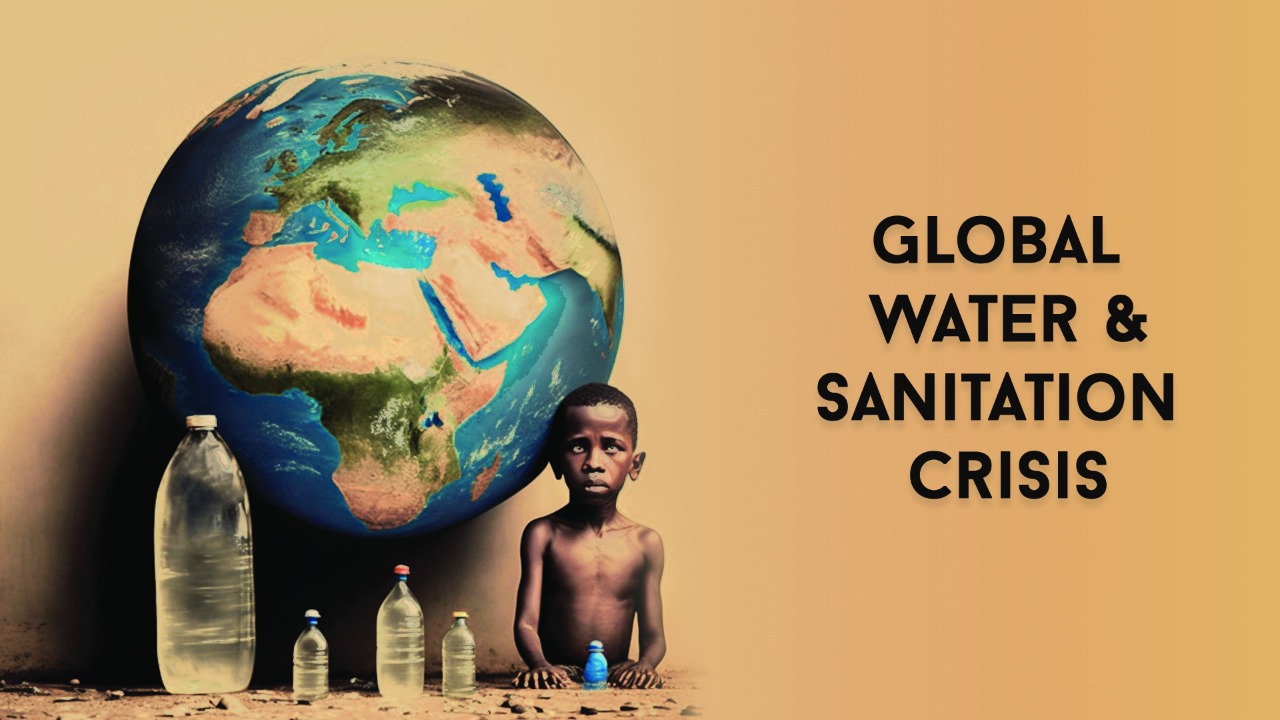The Global Water and Sanitation Crisis: Understanding the Issues
This post explores the causes and consequences of the global water and sanitation crisis. It examines the lack of investment in infrastructure and services, poverty and the impact of climate change on water resources as the major causes. It also highlights the severe consequences such as waterborne diseases, poor hygiene, and economic burden on households and health systems. The blog post also suggests steps that can be taken to address the crisis such as increasing investment in infrastructure and services, addressing poverty, reducing greenhouse gas emissions, promoting the use of renewable energy sources and involving local communities and stakeholders in the decision-making process.

Access to clean water and basic sanitation is a fundamental human right, yet billions of people around the world still lack access to these essential services. The global water and sanitation crisis is a complex issue that affects many aspects of life, including health, education, and economic development. In this blog post, we will explore the causes and consequences of the water and sanitation crisis and discuss what can be done to address it.
One of the major causes of the water and sanitation crisis is a lack of investment in infrastructure and services. Many low-income countries do not have the resources or the capacity to build and maintain the necessary infrastructure and services to provide clean water and basic sanitation to their populations. This is particularly true in rural areas, where access to water and sanitation is often limited.
Poverty is also a major cause of the water and sanitation crisis. People living in poverty often do not have the means to afford clean water and sanitation services, and they may not have the knowledge or skills to maintain and repair their own infrastructure. As a result, they are more likely to rely on unsafe sources of water, such as contaminated rivers or lakes, and they may not have access to basic sanitation facilities, such as toilets or latrines.
Climate change is also exacerbating the water and sanitation crisis. As temperatures rise and precipitation patterns shift, the availability and quality of water are changing in ways that can have serious consequences for human health, agriculture, and the environment. Changes in precipitation patterns can lead to more frequent and severe floods in some areas, while other regions may experience more prolonged droughts. This can have a significant impact on water availability, making it more difficult for farmers to grow crops and for communities to access clean water. Additionally, the melting of glaciers and ice caps can also lead to sea level rise, which can increase the risk of flooding and erosion in coastal communities.
The consequences of the global water and sanitation crisis are severe and far-reaching. Without access to clean water and basic sanitation, people are at an increased risk of waterborne diseases, such as cholera and diarrhea, which can lead to illness and even death. In addition, lack of access to sanitation can lead to poor hygiene, which can further spread disease.
The lack of access to clean water and basic sanitation also has significant economic consequences. People living without access to these services are often unable to work or attend school, which can lead to poverty and limited economic opportunities. Additionally, the cost of treating waterborne diseases can be a significant burden on households and health systems.
To address the global water and sanitation crisis, it is important to increase investment in infrastructure and services, particularly in low-income countries and rural areas. This can include building and maintaining water systems and sanitation facilities, as well as providing education and training to communities on how to use and maintain these systems.
It is also crucial to address poverty, which is a major cause of the water and sanitation crisis by providing economic opportunities and support for vulnerable communities. This can include things like providing microfinance and other financial services to help people afford clean water and sanitation services, as well as investing in education and training programs to help people improve their livelihoods.
Reducing greenhouse gas emissions and promoting the use of renewable energy sources are also important to address the impact of climate change on water resources. By reducing our carbon footprint, we can also reduce the rate at which the climate is changing, and therefore, the impacts on water resources.
Involving local communities and stakeholders in the decision-making process of water resources management is also key. These communities and stakeholders are often the ones most affected by the changes in water resources and have valuable knowledge and experience that can be incorporated into the planning and management of water resources.
The global water and sanitation crisis is a complex issue that affects many aspects of life, including health, education, and economic development. To address this crisis, it is important to increase investment in infrastructure and services, particularly in low-income countries and rural areas, address poverty, reduce greenhouse gas emissions and promote the use of renewable energy sources, and involve local communities and stakeholders in the decision-making process.
It is important to understand that access to clean water and basic sanitation is a fundamental human right, and it is our responsibility to ensure that everyone has access to these essential services. By taking action to address the global water and sanitation crisis, we can create a better, healthier future for all.
ALSO READ
Wildfires Rage in Los Angeles: A Climate Change Crisis
Climate Change's Toll: A Record $140 Billion in Insured Losses in 2024
US Delegation Engages with Chennai on Water Challenges and Climate Change
IREDA's Remarkable Q3 Performance Fuels India's Renewable Energy Ambitions
Unveiling the Hidden Costs: Climate Change and Health in Low-Income Nations










